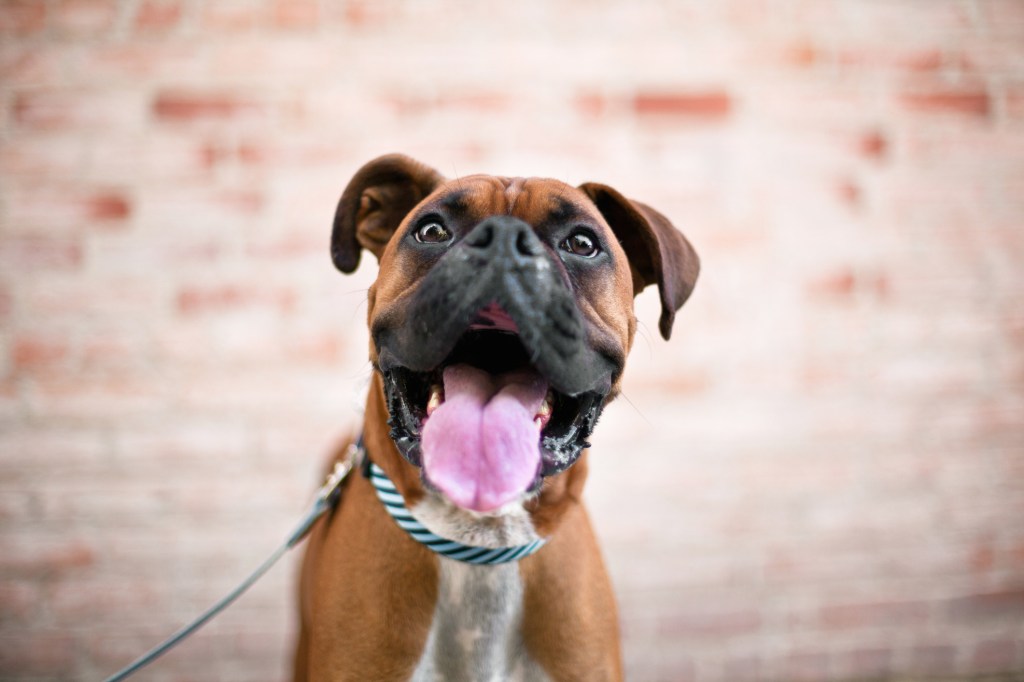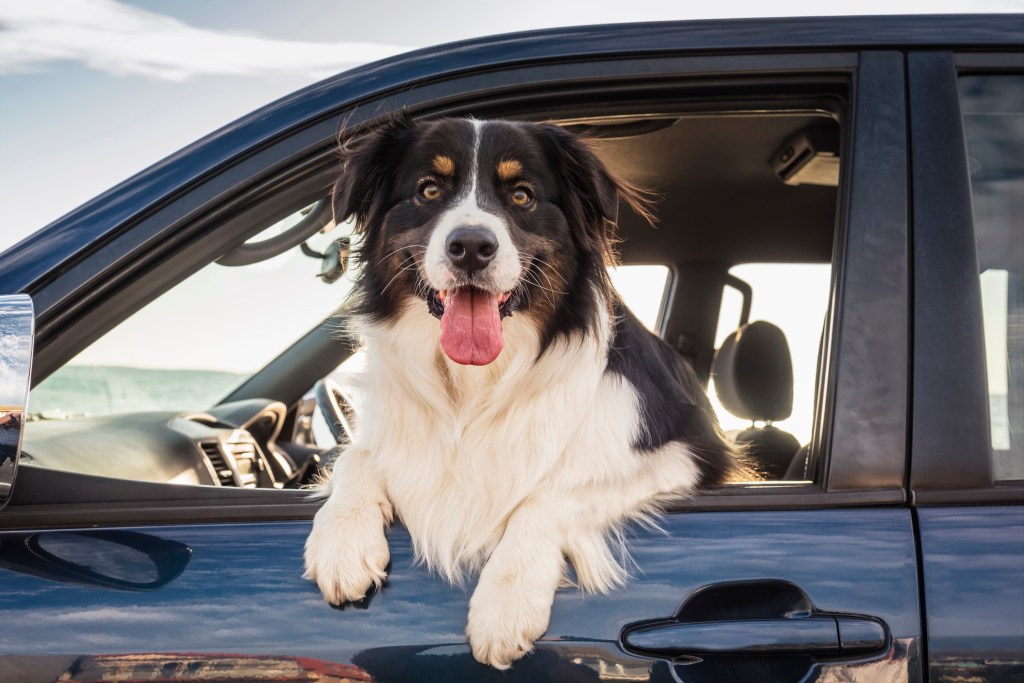If your dog experiences nausea or vomiting while traveling, they might be dealing with motion sickness. Our furry companions often share our human-like afflictions, and car sickness is no exception. Dogs may experience car sickness due to either psychological or physical factors, with psychological triggers potentially inducing physical reactions. While a variety of factors may play a role, some dog breeds are prone to motion sickness.
Why do dogs get motion sickness?
According to veterinarians, motion sickness in dogs typically occurs due to excessive stimulation of the inner ear. As is the case with humans, this can lead to discomfort. Many dogs can be prone to feeling queasy during car rides. Some may pant, excessively drool, vomit, defecate, whine or pace, or appear lethargic. Inner ear abnormalities can also increase a dog’s susceptibility to car sickness, particularly in cases where the inner ear is not fully developed, as often seen in puppies. This explains why young dogs are more prone to car sickness than adults. Fortunately, many puppies outgrow this unpleasant experience around the age of one.
Like the physical cause of motion sickness, stress also plays a significant role. Some dogs can associate car travel with visits to the vet, which can further exacerbate their symptoms. They may also find sensory triggers stressful, such as loud music or the sound of heavy traffic. Poor ventilation, a too-empty or too-fully stomach, or disorientation caused by not being able to see the road can also contribute to motion sickness in dogs.
Dog breeds prone to motion sickness
Boxer

While the Boxer is known for their playful and energetic nature, they are also highly sensitive. Because of this sensitivity, they may find the numerous physical sensations and sounds during car rides to be overwhelming. As a result, the stress could lead to symptoms of motion sickness.
Border Terrier

The Border Terrier, a spunky, agile dog hailing from the Anglo-Scottish border, is known to be susceptible to motion sickness. While the reason for this is not clear, their size and sensitivity may play a role. They are hyper-aware of external stimuli like voice, sound, and touch.
Border Collie

Spirited, athletic, and agile, the Border Collie is famous for their herding abilities. If you’ve ever seen videos of Border Collies at work, you know they are incredibly fast, sharp, and responsive. While their sensitivity lends a hand when they’re working, loud noises may also cause a fear reaction. This heightened sensitivity might contribute to their tendency to experience car sickness.
French Bulldog

Both the English Bulldog and French Bulldog are prone to motion sickness, possibly due to their short snouts and brachycephalic anatomy. This flattened face can heighten their sensitivity to temperature and airflow. Additionally, if they begin to pant from anxiety or stress, they may start to overheat which could lead to worse symptoms of nausea.
Dachshund

One of the most emotionally sensitive dogs, the Dachshund breed is prone to motion sickness. Spending long hours in the car may be overwhelming for these pups, which can cause anxiety. As a result, they may experience symptoms of car sickness.
Beagle

The Beagle, celebrated for their loving demeanor and charming looks, also possesses one of the keenest senses of hearing among dog breeds. This heightened sensitivity to sound, coupled with their small size potentially causing difficulty in seeing the road, can lead to disorientation. As a result, Beagles may be more prone to motion sickness.
Pug

Similar to the English Bulldog and French Bulldog, the Pug dog breed is prone to motion sickness. While the cause may not be certain, it is possibly due to their brachycephalic facial structure. They may be more reactive to heat caused by poor ventilation in the car, which can exacerbate symptoms of motion sickness.
Golden Retriever

Few things can release feel-good dopamine quite like being greeted by a big smile and wagging tail from a Golden Retriever when you come home. While highly affectionate and sensitive, they can also be somewhat nervous, which usually manifests as separation anxiety. These loyal pups truly hate to see you leave! In the case you decide to bring them along with you for a car ride, this same sensitivity to anxiety may lead to nervous behavior in the car. This could result in your dog feeling queasy.
Staffordshire Bull Terrier

As a Pit Bull breed, Staffordshire Bull Terriers sometimes have a bad reputation for aggression. As any Staffy lover knows, nothing could be further from the truth. They are highly loving and are even highly empathic to the feelings of their humans. Because of this empathetic nature, they can pick up on their owners’ emotions, including anxiety while driving. This sensitivity may lead to their own feelings of anxiety, potentially triggering car sickness.
Labrador Retriever

Arguably the breed with the best sense of hearing, Labrador Retrievers frequently find work as service animals, in search and rescue missions, or detection work. Labs possess a high density of auditory hair cells and strong auditory processing in their brains, enabling them to interpret sounds effectively. This heightened ear sensitivity might contribute to the breed’s susceptibility to motion sickness.
What to do if my dog gets motion sickness?
- Don’t feed your dog right before travel. Make sure they have a light meal a few hours before getting in the car or they may vomit due to motion sickness.
- Try an over-the-counter motion sickness medication. There are products made specifically for dogs that use the same active ingredients found in human motion sickness pills. Consult with your vet on dosage.
- Lower windows so your dog can put their head out and get fresh air. This may help reduce nausea.
- Use pheromone sprays or collars designed to calm and relax dogs. These may ease anxiety that worsens carsickness. Adaptil and Comfort Zone are some popular brands.
- Take frequent breaks on longer drives so your dog can walk around and relieve their stomach. Don’t let them wander off-leash near roads though.
- Consider a doggie seat belt that restricts movement. Excess movement can trigger signs of motion sickness.
- Stay calm and soothe your dog if they do get sick. Don’t yell or punish them, as this can make anxiety worse next time.
- Ask your veterinarian about prescription anti-nausea or sedative medications if OTC options fail. These can prevent sickness on car rides.
The sooner you identify motion sickness tendencies and treat it, the easier travel will be on your queasy canine companion. With some tweaks, car rides can be more enjoyable.
How can I prevent my dog from getting car sick?
- Gradual exposure: Start by introducing treats in the car and gradually increase the duration of trips, progressing from short journeys to longer ones. This helps your dog acclimate to the car and its movements.
- Positive associations: If you only take your pup in the car to places like the vet or a boarding facility, they may begin to associate the car with negative experiences. Instead, take your dog somewhere they’ll enjoy, like out for a hike or a dog park.
- Ventilation: Ensure proper airflow in the car or crack open a window to prevent overheating.
- Allow visibility: Allow your dog to look out of the car window to orient themselves, but make sure they are safely restrained.
- Diet: Feed your dog a small, light, high-protein meal one to two hours before the car trip.
You may also want to speak with your vet about natural calming products or anti-anxiety medications for dogs like fluoxetine, gabapentin, or trazodone. The FDA also approved the use of maropitant citrate, a motion sickness drug for dogs.
If you’ve got a long road trip coming up, you may want to check out our tips for road trips with your pup and ways to help manage your dog’s car sickness.






